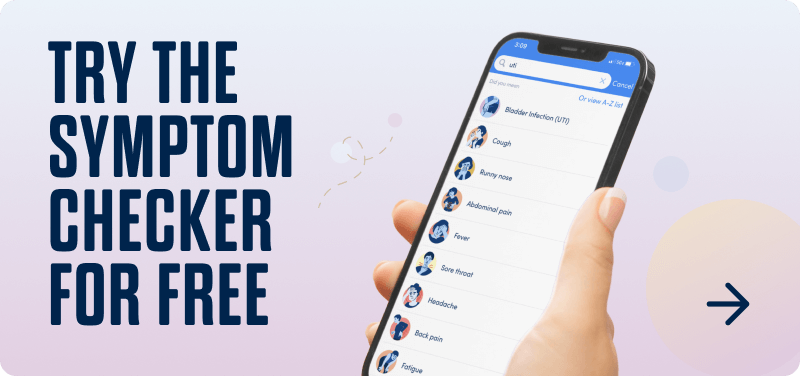About 13.2% of adults in the U.S. take antidepressants.
Of the many types of antidepressants available, Cymbalta and Lexapro are commonly prescribed for the treatment of major depressive disorder (MDD) and generalized anxiety disorder (GAD).
You may be experiencing adverse reactions with your current medication and considering your other options.
Although these two drugs have a similar mechanism of action—both affect the levels of serotonin in the brain—there are some differences.
In this article, we’ll discuss the differences and similarities between Cymbalta and Lexapro, the conditions they treat, and their effectiveness.
We’ll also compare the coverage and the cost of the medication, the common side effects, and the possible drug interactions of Cymbalta and Lexapro.
What Are the Differences & Similarities Between Cymbalta and Lexapro?
Cymbalta and Lexapro are prescription drug antidepressants used to treat major depression and generalized anxiety disorder.
Cymbalta, the brand name for duloxetine, is a serotonin-norepinephrine reuptake inhibitor (SNRI).
This class of antidepressants works by preventing the reuptake (reabsorption) of two neurotransmitters in the brain called serotonin and norepinephrine.
The resulting increased levels of these chemical messengers helps to relieve symptoms of major depressive disorder and generalized anxiety disorder.
The FDA has also approved Cymbalta for the treatment of some pain conditions.
Lexapro, the brand name for escitalopram, is a selective serotonin reuptake inhibitor (SSRI).
It works by preventing the reuptake of serotonin in the brain, thereby increasing the levels of available serotonin.
Since serotonin is a neurotransmitter responsible for mood, sleep, and other bodily functions, increased amounts in the brain help ease symptoms of major depressive disorder and generalized anxiety disorder.
The table below provides an overview of how the two antidepressant medications compare:
| Cymbalta | Lexapro | |
| Drug class | Serotonin-norepinephrine reuptake inhibitors (SNRI) | Selective serotonin reuptake inhibitors (SSRI) |
| Generic name | Duloxetine | Escitalopram |
| Standard dosage | 60 milligrams (mg) once daily | 10 mg once daily |
| Dosage strengths available | 20 mg, 30 mg, and 60 mg | 5 mg, 10 mg, and 20 mg |
| Dosage forms | Oral capsule | Oral tablet and oral solution |
| Recommended age group | 7 years and older (generalized anxiety disorder) | 12 years and older (major depressive disorder) |
What Conditions Are Treated with Cymbalta and Lexapro?
Both Cymbalta and Lexapro are prescription medications for the treatment of major depressive disorder and generalized anxiety disorder.
Cymbalta is also approved for treating some pain-related conditions, including fibromyalgia, diabetic peripheral neuropathic pain, and chronic musculoskeletal pain.
Cymbalta is the only antidepressant approved to treat neuropathic pain.
Lexapro is prescribed off-label for the treatment of conditions such as panic disorder, premenstrual dysphoric disorder, and obsessive-compulsive disorder.
When a doctor or healthcare provider prescribes a drug off-label, they prescribe it for a condition that the FDA has not approved.
Off-label prescription is not illegal, but your doctor should explain how the drug may help your condition.
Below is a summary of the conditions that Cymbalta and Lexapro are used to treat:
| Condition | Cymbalta | Lexapro |
| Major depressive disorder (MDD) | Yes | Yes |
| Generalized anxiety disorder (GAD) | Yes | Yes |
| Irritable bowel syndrome (IBS) | Yes | Yes |
| Fibromyalgia | Yes | No |
| Chronic musculoskeletal pain | Yes | No |
| Diabetic peripheral neuropathic pain (DPNP) | Yes | No |
| Panic disorder | No | Off-label |
| Obsessive-compulsive disorder (OCD) | No | Off-label |
| Premenstrual dysphoric disorder | No | Off-label |
| Posttraumatic stress disorder | No | Off-label |
| Social anxiety disorder | No | Off-label |
| Vasomotor symptoms of menopause | No | Off-label |
| Chemotherapy-induced peripheral neuropathy | Off-label | No |
| Stress urinary incontinence | Off-label | No |
This list is not conclusive.
Consult your doctor to know which medication is suitable for you.
Effectiveness of Cymbalta and Lexapro
A comparative study of escitalopram (Lexapro) and duloxetine (Cymbalta) found that escitalopram was superior to duloxetine for short-term treatment of depression.
The researchers also concluded that escitalopram is as effective as and more tolerable than duloxetine for long-term treatment.
Due to adverse reactions, the withdrawal rate of patients on duloxetine was 8% higher than that of patients on escitalopram.
Another study showed similar results: Escitalopram was better tolerated and at least as effective as duloxetine for treating major depressive disorder.
This is not to say that Lexapro is better than Cymbalta for treating depression, but rather that people were more likely to discontinue Cymbalta due to common adverse reactions.
Coverage & Cost of Cymbalta and Lexapro
Medicare and commercial insurance plans usually cover at least some of the cost of both generic versions and brand-name Cymbalta and Lexapro.
The exact cost of your medication varies depending on the brand and dosage, as well as your insurance and pharmacy.
A month’s supply of 30-milligram Cymbalta can cost almost $730, while a month of 20-milligram Lexapro can cost up to $260.
You may be able to save money using coupon codes with participating pharmacies.
Common Side Effects of Cymbalta and Lexapro
Cymbalta and Lexapro share similar side effects, although some are more pronounced using one drug than the other.
The table below covers the possible side effects, though this list is not exhaustive.
| Cymbalta | Lexapro | |
| Side effect | Applicable | Applicable |
| Nausea | Yes | Yes |
| Sweating | Yes | Yes |
| Dry mouth | Yes | Yes |
| Drowsiness | Yes | Yes |
| Dizziness | Yes | Yes |
| Decreased appetite | Yes | Yes |
| Decreased libido | No | Yes |
| Constipation | Yes | Yes |
| Headache | Yes | No |
Most symptoms do not last past the first few weeks of starting either medication.
If you experience any of these symptoms, speak with your doctor.
They can help you manage them and, depending on how severe they are, may suggest switching to another antidepressant.
Drug Interactions & Warnings
Cymbalta and Lexapro can have unpleasant reactions with other drugs.
Before starting either medication, inform your doctor of the other medicines you’re using, including vitamins and supplements.
Cymbalta and Lexapro should not be used within 14 days of using any monoamine oxidase inhibitors (MAOIs).
This class of antidepressants includes:
- Isocarboxazid (Marplan)
- Phenelzine (Nardil)
- Selegiline (Emsam)
- Tranylcypromine (Parnate)
- Linezolid (Zyvox)
- Intravenous methylene blue
Cymbalta and Lexapro also interact with other serotonergic medications such as:
- Tricyclic antidepressants
- Triptans
- Lithium
- Fentanyl
- Buspirone
- Tramadol
- Tryptophan
- St. John’s wort
- Amphetamine
Lastly, using Cymbalta and Lexapro with aspirin, non-steroidal anti-inflammatory drugs (NSAIDs), warfarin, and other anticoagulants increases bleeding risk, including life-threatening hemorrhages.
Cymbalta or Lexapro also have side effects of their own.
People taking either medication for major depressive disorder or other psychiatric disorders are at risk for increased suicidal thoughts and behavior.
If you have any concerning thoughts, seek care immediately.
How K Health Can Help
Your choice of an antidepressant can affect the quality of your life. You need to consult a doctor to know which treatment plan will be best for you.
Think you might need a prescription for Cymbalta (duloxetine) or a prescription for Lexapro (escitalopram)?
K Health has clinicians standing by 24/7 to evaluate your symptoms and determine which prescription is right for you.
Get started with our free assessment, which will tell you in minutes if treatment could be a good fit. If yes, we’ll connect you right to a clinician who can prescribe medication and have it shipped right to your door.
Frequently Asked Questions
K Health has strict sourcing guidelines and relies on peer-reviewed studies, academic research institutions, and medical associations. We avoid using tertiary references.
-
Antidepressant Use Among Adults: United States, 2015–2018. (2020).
https://www.cdc.gov/nchs/products/databriefs/db377.htm -
A Comparative Study of the Efficacy of Acute and Continuation Treatment With Escitalopram Versus Duloxetine in Patients With Major Depressive Disorder. (2007).
https://pubmed.ncbi.nlm.nih.gov/17559755/ -
Cymbalta Prices, Coupons and Patient Assistance Programs. (n.d.).
https://www.drugs.com/price-guide/cymbalta -
Double-Blind Comparison of Escitalopram and Duloxetine in the Acute Treatment of Major Depressive Disorder. (2007).
https://pubmed.ncbi.nlm.nih.gov/17563128/ -
Lexapro Prices, Coupons and Patient Assistance Programs. (n.d.).
https://www.drugs.com/price-guide/lexapro -
The Use of Antidepressants in the Treatment of Irritable Bowel Syndrome and Other Functional GI Disorders. (n.d.).
https://www.med.unc.edu/ibs/wp-content/uploads/sites/450/2017/10/IBS-and-Antidepressants.pdf

 Medically reviewed
Medically reviewed

